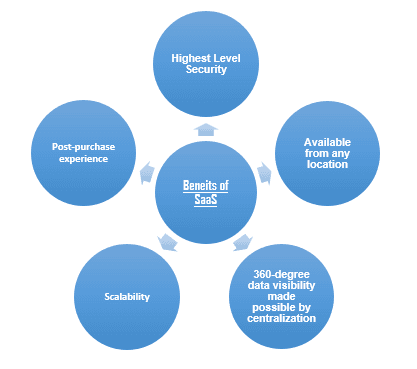“Unlocking Efficiency and Innovation: The Transformative Power of SaaS in Supply Chain Management”
Overview
Software as a Service (SaaS) platforms give businesses access to cutting-edge technologies that not only spur innovation but also challenge conventional business practices. SaaS facilitates business process changes more quickly.
In recent years, supply chain management and logistics operations have been completely changed by software as a service (SaaS). The range of what technology can perform for businesses has expanded as it has developed to the point where a sizable number of tasks can be transferred to the Cloud. This transition is particularly noticeable in the fashion sector, where there are many moving parts in supply chains and a high risk of issues.
SaaS has demonstrated its value in streamlining operations and establishing transparent supply chains, which are more crucial than ever in the current environment of multinational, interconnected corporations.
Software as a Service (SaaS) platforms give businesses access to cutting-edge technologies that not only spur innovation but also challenge conventional business practices. SaaS facilitates business process changes more quickly.
SaaS solutions automate business processes, empowering executives, employees, and trainees alike, and transforming you into the consultant you previously hired to complete the task.
Benefits of SaaS

SaaS offers quicker software deployment than on-premises software, making it the holy grail of recurring income models for software developers. Similar to other cloud services, SaaS gives small firms the chance to upend established markets while utilizing reasonable SaaS pricing structures. When they don’t have the resources, time, or skills to create their own apps or host applications on-premises, startups and small enterprises will find SaaS useful. Larger businesses may employ SaaS technology for transient initiatives or seasonally ad hoc applications.
Any business that deals with programmes that need access on the web and via mobile devices can profit from SaaS technology. For basic applications that are available through public clouds, SaaS installation can be comparatively easy and self-provisioned.
A more coordinated, easy, and scalable perspective into supply chain activities is made possible by flexible, cloud-based software. Business executives may not only keep a closer check on vital operations, but they can also use cloud technology to build the transparent supply chain that today’s investors and firms want. The need for cloud-based SaaS solutions has grown even more after the outbreak.
Many businesses turned to the cloud in pursuit of a more predictable, effective, and economical way to manage supply chains while providing flexible business continuity as a result of the uncertainty and panic of 2020.
Software as a Service Illustrations
According to a study, the global market for supply chain management is expanding at a CAGR of almost 10.7% and is expected to reach $42.1 billion in value by 2027. The freight management software market, which will be valued at $25.6 billion by 2027 and has a CAGR of just under 10%, is responsible for the majority of the market’s growth—nearly 60%.
The Warehouse Management System is among the most widely used SaaS-based solutions. It can assist in automating a number of warehouse operations, which will ultimately increase productivity. The organization, staffing, directing, and control of inventory movement within the warehouse would facilitate the daily operations. Other SaaS solutions enhance the capacity for data storage, management, and organization. SaaS customer relationship management (CRM) programmes and marketing automation tools are excellent illustrations of how software on demand is assisting companies in achieving their objectives. Whatever the solution, SaaS customers today range from those who are drawn to online applications because they are accessible (or free) to those who work for larger enterprises that have integrated SaaS solutions into their line of business divisions. Office 365, Google G Suite (Apps), Dropbox, Salesforce, SAP Concur, and Zoom are a few well-known examples of software as a service.
Conclusion
Supply chain can instantly and at every stage be up to date thanks to SaaS. No one needs to wait for emails or phone calls informing them of directions from upstream or delays from downstream in the supply chain. The delivery driver can handle the updates quickly and remotely, ensuring that no one has to wait till their return from their trip with the necessary paperwork before updating the system. All of this helps your brand and supply chain for the future and leads to an overall increase in efficiency, mostly due to better communication between various partners and departments.
Author: Divyansh Tiwari
